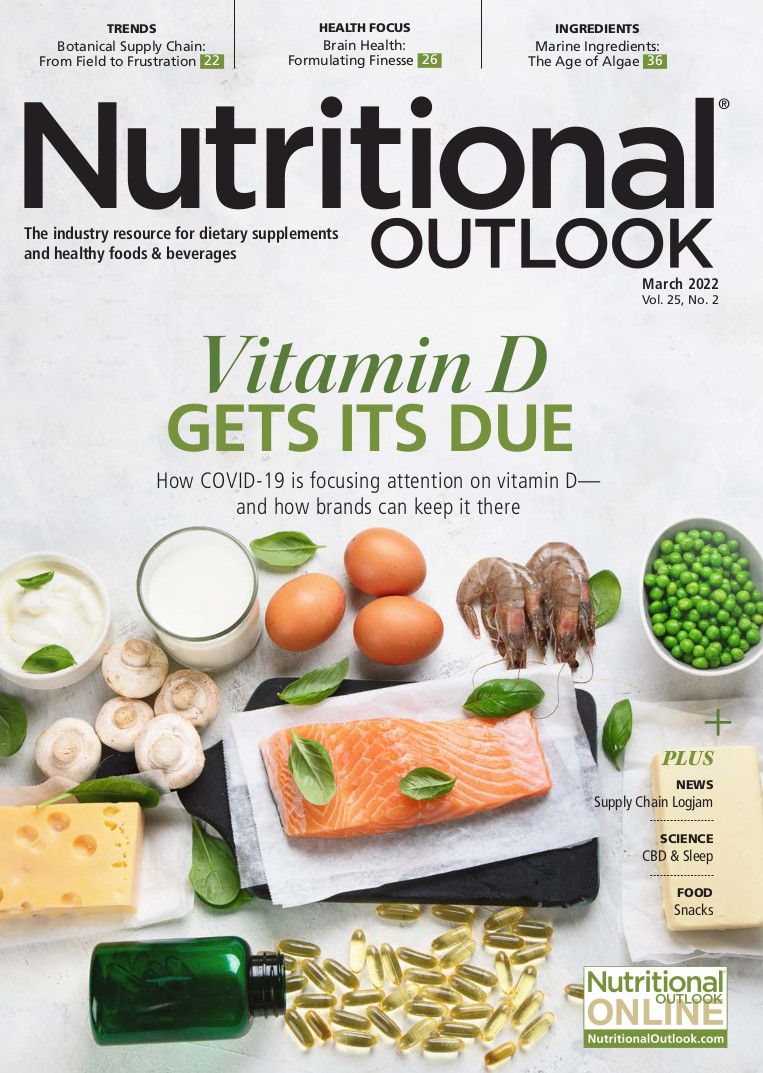Winning the plant-based gummy game: Switching from gelatin to plant-based polymers involves strategic planning
An expert discusses key considerations that must be accounted for when switching to a plant-based gummy.
Gummies provide consumers with a fun, convenient dosage form. And when it comes to the consumer’s daily supplement regimen, gummies enable higher compliance.
Gelatin has typically been the most common base ingredient in gummies, and it continues to be the most popular polymer used in these formulations. However, the modern consumer is increasingly selective and wants products that fit specific lifestyles and dietary restrictions. With more than 75 million people worldwide following a vegan, kosher, and/or halal diet1, manufacturers must provide supplements without animal by-products like gelatin to meet these consumers’ needs.
Selecting the right plant-based hydrocolloid is critical. Your choice of hydrocolloid impacts the sensory and appearance attributes of the final gummy. However, creating a vegan gummy can be difficult because the gelatin gummy mouthfeel—and taste experience consumers know and love—are hard to replicate with plant-based ingredients.
Plant-based hydrocolloids like pectin, starch, carrageenan, agar, and gum arabic are common alternatives to gelatin. Depending on the desired texture and organoleptic properties, these hydrocolloids are used alone or in blends. Pectin is the most commonly used gel former: between May 2020 and May 2021, every second dietary supplement gummy contained pectin.2
There’s also an added layer of manufacturing and processing challenges that come with formulating non-gelatin gummies. Below, I’ll outline the common issues that formulators face whilemaking the switch to plant-based gummy formulations, and how to overcome them.
1. Formulation viscosity has the potential to increase
Although the overall percentage of gelling polymer in the formulation is most likely reduced when removing gelatin, the hot viscosity profiles of the remaining polymers can differ, with plant-based options typically having higher melt viscosity. One of the best ways to decrease the chances of gel seizure or pre-gelation is to ensure that your cooking and transfer equipment are sufficiently jacketed and rated to handle the higher temperatures needed for plant-based formulation.
The typical recommended temperature range for a plant-based formulation would be greater than at least 85°C throughout the process. It's critical to ensure your equipment can achieve and maintain this temperature prior to making a formulation change.
2. Formulation temperature needs are different
While it’s important for gelatin to be heated to facilitate proper hydration, it’s even more crucial to ensure hydration for a gelling polymer like pectin. To achieve proper pectin hydration—and consistent batch-to-batch consistency in final texture—it’s crucial to mix pectin and water at a temperature in excess of at least 85°C during this initial hydration phase. Making sure the hydration mixing vessels can achieve and sustain this temperature for the entire hydration phase is crucial to batch success.
3. Acidic ingredients are sensitive
Most plant-based gelling polymers are somewhat sensitive to acidic ingredients. High-ester pectin relies on a pH-controlled mechanism for gelation to occur; therefore, if the pH of the gel is lowered too early in the manufacturing process through the addition of acidic ingredients (such as ascorbic acid or citric acid), pre-gelation may ruin the batch.
Additionally, when using a polymer like seaweed extract, the gel may degrade through prolonged exposure to low-pH environments, making the final gel weak or unstable. To eliminate potential issues with pre-gelation or an unstable gel, special care should be taken to ensure ingredients that may lower the pH of the gel are added as close to the depositing step as possible.
4. Maintaining an ideal pH
As mentioned previously, high-ester pectin, the most common plant-based alternative to gelatin, relies on a pH-triggered mechanism to form the final gummy texture. This contrasts with the thermo-gelation mechanism for both gelatin and seaweed extracts.
As mentioned above, care should be taken to ensure that any acidic ingredients are added as close to the depositing step as possible. However, additional caution should be taken to ensure proper buffer systems, such as sodium citrate, to make certain the pH of the final gummy is maintained in the ideal range (roughly 3.2-4.0, depending on the formulation components) throughout the gummy’s shelf life.
Additionally, the pH of the system has the potential to change when making a transition from gelatin to pectin; therefore, it’s important to evaluate if there are any potential stability challenges for the active ingredients at this lower pH.
5. Set temperatures may be different
One of the benefits of using a plant-based gelling polymer in place of gelatin is enhanced thermal stability of the final gummy pieces. With additional thermal stability, however, comes the need for additional process changes to facilitate the higher temperatures needed for depositing.
Proper temperature control throughout the mixing, cooking, and depositing process is key to making sure the gel is not exposed to large changes in temperature that could result in gel seizure and batch failure. Additionally, optimizing drying conditions may be necessary, as plant-based gummies have the potential to set faster and therefore decrease drying or conditioning times.
It Can Be Done
Making the switch from gelatin to a plant-based gummy formulation is not without its challenges. These technical challenges, however, can be overcome and present an excellent opportunity to expand your consumer base and meet the needs of the modern consumer.
References
- Wright L. “How Many Vegans in the World? In the USA? (2020).” VeganBits: All Things Vegan website. Updated on January 1, 2020.
- Mintel Global New Products Database
About the Author
Drew Mound is an application development and innovation scientist at IFF. Drew received a Bachelor of Science degree in chemistry from The College of New Jersey in Ewing, NJ. Shortly after, he started his career in various laboratory-based roles for FMC Health and Nutrition before it was acquired by DuPont Nutrition & Biosciences (N&B). At DuPont, he took the role of application development and innovation scientist, focusing on nutraceutical applications. Once DuPont N&B was acquired by IFF, he spent time as the gummy project lead, assisting formulators globally with making healthy and stable gummies, before moving into his current role as Pipeline & Project Manager for taste specific activities. For more information about gummy manufacturing, click here.

Prinova acquires Aplinova to further increase its footprint in Latin America
April 7th 2025Prinova has recently announced the acquisition of Brazilian ingredients distributor Aplinova, which is a provider of specialty ingredients for a range of market segments that include food, beverage, supplements, and personal care.






















